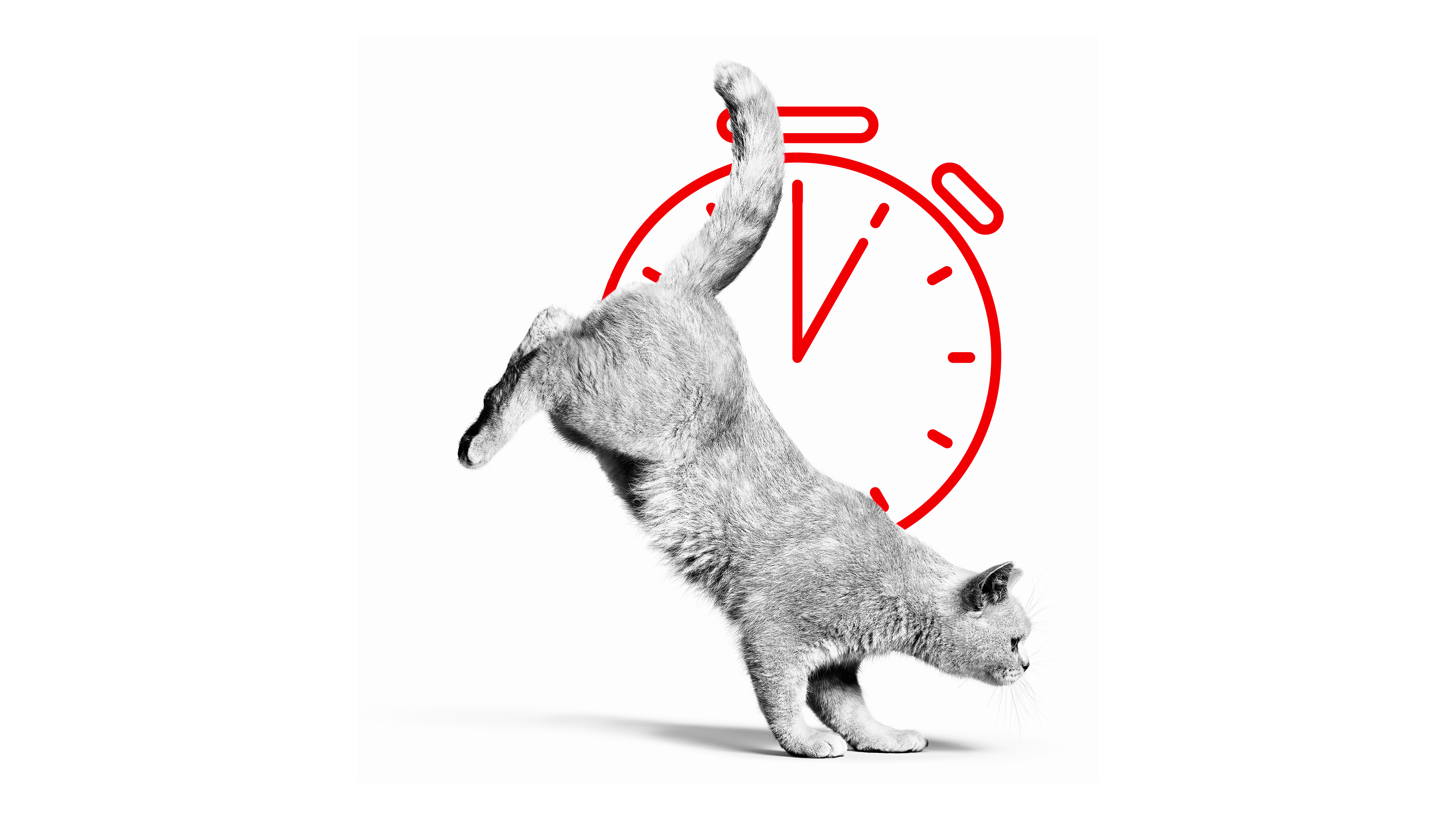
Healthy activity requires play
Playtime is key to keeping your cat stimulated, active and at a healthy weight. The amount of exercise varies based on factors such as their age, weight and breed.
How much exercise does my cat need?
Cats are naturally active animals and thrive on short bursts of activity to keep both their bodies and minds active and engaged with the world. Outdoor cats will happily spend several hours a day roaming their local environment and hunting.
To stay similarly happy and healthy, indoor cats need to spend a lot of time engaging with you, with plenty of toys to keep them occupied and busy. When thinking about how often you need to exercise an indoor cat, plan for plenty of sessions of play and interaction throughout each day. Care is needed to ensure that an indoor cat's environment doesn't become boring, as this can lead to them being inactive and putting on unnecessary weight.
Exercise and play are essential for all cats as they improve their motor skills, provide brain training and encourage social behaviour. Ensuring your cat has room to play, as well as access to a variety of different cat toys, scratching posts and play sessions with you will help them to stay healthy and happy.
Indoor vs outdoor cats – how might this impact activity?
Cats thrive when they can enjoy exercising in short bursts. They are active animals and like to roam throughout the day, making the most of opportunities to run, jump, climb and play. The types of exercise your cat experiences will depend on whether they’re an indoor or outdoor cat. Outdoor cats tend to exercise by themselves, exploring the environment around your home and climbing, hunting and roaming until they're tired.
Indoor cats require more attention from you to stay happy and healthy. They need enough space to exercise, to climb and to play to prevent them from becoming inactive and bored. Indoor cats will need a scratching post, interesting toys to keep them occupied and lots of interaction with you. Cats are intelligent animals and will enjoy hunting and chasing their toys with you in short bursts.
Taking time and care to provide your cat with mental and physical stimulation, whether they’re indoor or outdoor cats, will make sure you’re enriching both their bodies and brains.
Activities for indoor cats
Cats like to sleep for many hours during the day, but when they’re awake, they need plenty of opportunities for exercise. This means making time to interact and play with them, especially if yours is an indoor cat.
Providing a selection of different toys and bringing them out in weekly rotation will both prevent your cat from becoming bored and ensure that both their body and brains are given a fun work out. That being said, cats receive a lot of mental stimulation from interacting with their owners, so play sessions with you are key.
Cats are clever animals and will enjoy activities like working out how a puzzle feeder works or hunting for hidden dried food at meal times. This type of activity can help to replicate the running, jumping, climbing, and stalking they would do in the wild.
Cats have powerful, tightly controlled muscles. Access to a cat tree that’s tall enough for your cat to use fully stretched will also help them to strengthen their muscles and stay happy and healthy.
Speak to your vet
Meeting your cat's need for regular activity is an essential part of helping them to stay at a healthy weight. Providing the right intensity and frequency of exercise for your cat, together with healthy food portioning, may also prevent them from developing certain conditions that can be caused by obesity, including diabetes and arthritis.
Ask your vet to show you how to identify what your cat's normal and healthy shape is. Healthy cats are well proportioned with ribs you can easily feel, a waist you can see from above and an abdomen that tucks up behind their rib cage when seen from the side.
If necessary, your vet will be able to suggest how to increase your cat's daily exercise and help you with any questions or worries you might have about changes to your pet's shape or weight.
Healthy weight isn't only measured on a scale
Weighing your cat is not the only way to check if they're overweight. You can find out if your cat's a healthy weight by asking your vet how to use the Body Conditioning Score.
Healthy portions are smaller than you think
Many pet owners think their cat needs more food than it really does. This means that many cats are overfed; not only can this cause weight gain, but may lead to other health issues.